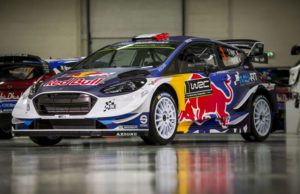Yippie-ya-yeah, off we got to Austin, Texas, to the Circuit of the Americas. Brembo fact: the hardest breaking point lies ahead of turn 12 – the Formula One drivers have to brake hard, slowing by 259 kp/h over just 127 metres in under 1.36 seconds.
The calculated braking energy here is 2,563 kW. The driver is subject to 5.7 G and yet has to push with 187 kg onto the brake.
Circuit notes
T1: The run from pole is 500m but the track goes steeply uphill, with the turn-in point for the corner at the crest. There is around 40m in height difference from the end of the straight to the apex of turn 1.
T3: The start of the Esses. Turns 3 to 6 are flat out with the average speed around 210kph in fifth or sixth gear.
T11: Turn 11 is a potential overtaking opportunity. Drivers come out of the third gear turn 9 into the flat out turn 10 then into a heavy braking for the hairpin at 11. Revs will drop to 9,500rpm and the car speed to just 80kph.
T12: Turn 12 comes after the 1km straight. Brakes need to be set-up so they are not too cool at the end of the straight so the driver can make the corner.
T13: 13, 14 and 15 are fairly low speed, with the line determined by the kerbs; all second gear corners.
T16: Front wing levels are tailored to counter understeer in this continuous double apex.
Power Unit notes
- Just under 60% of the lap is at wide open throttle. That rises to over 60% in qualifying. The average speed will be a touch under 200kph. Top speed peaks at over 320kph.
- Since gradient changes a lot over one lap engine speeds and turbo rotation vary constantly. Settings must be constantly adjusted to give optimal performance.
- After the first corner the driver goes back up through the gears to reach seventh for turns 2, 3 and 4. They are taken flat out with an average speed of 280kph. Similar to Maggots and Becketts at Silverstone and the Esses at Suzuka, the driver needs to be precise on the throttle and carry the speed all the way through rather than brake and accelerate. The power unit needs to be correspondingly smooth throughout the turns, delivering constant levels of torque.
- The low ambient humidity of the Texan grasslands has a big effect on the power units. The air contains more oxygen and the ICE will generate more power, but the aridity is very taxing on the internals.
Similar to Abu Dhabi and Korea, the longest straight is not the pit straight. In Austin it is the burst between turns 11 and 12, which is 1,016m. The car will be at full throttle for almost 20secs and will also spend over two seconds at maximum velocity at the end of the straight. The driver will brake heavily at the end of the straight for the hairpin. That’s why rear-end stability and stability under braking will be crucial.































